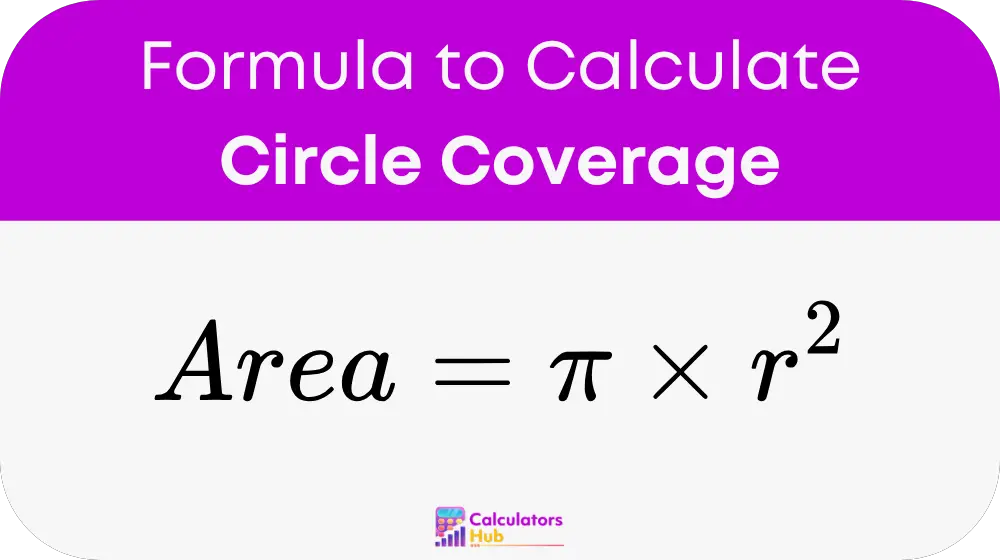The Circle Coverage Calculator is a tool designed to help you calculate the area of a circle quickly and accurately. This calculator is useful in various fields such as construction, landscaping, and interior design, where understanding the coverage or area of circular spaces is essential. Whether you are planning a round garden, creating a circular room, or designing a logo, the Circle Coverage Calculator simplifies the process of determining the area without requiring complex math.
The formula used by this calculator is based on the well-known geometric formula for the area of a circle. The formula allows you to input the radius of the circle, and it will return the area, helping you understand how much space the circle occupies.
Formula of Circle Coverage Calculator
The formula used to calculate the area of a circle is:

Where:
- π (pi) is a mathematical constant approximately equal to 3.14159.
- r is the radius of the circle.
Key Notes:
- Radius is half the diameter of the circle. For example, if the diameter of a circle is 10 meters, the radius will be 5 meters.
- The unit of the area will be the square of the unit of the radius. So, if you measure the radius in meters, the area will be in square meters (m²), and if the radius is measured in feet, the area will be in square feet (ft²).
Factors to Consider
When using the Circle Coverage Calculator, several factors can affect your calculation:
- Radius Measurement: Ensure that the radius is measured accurately. A small mistake in the radius measurement can result in a significant error in the calculated area because the radius is squared in the formula.
- Unit Consistency: Make sure that the radius measurement and area are calculated in consistent units. For instance, if the radius is measured in meters, the area will automatically be calculated in square meters.
- Practical Applications: Understanding the area of a circle is helpful when estimating the amount of material required to cover a circular space or determining how much space a circular object occupies.
A Table for Common Terms and Conversions
To further assist with your circle-related calculations, here’s a table of common terms and conversion factors that may be useful when working with circles:
| Term | Description | Conversion |
|---|---|---|
| Radius (r) | The distance from the center of the circle to any point on the edge. | 1 meter = 100 centimeters |
| Diameter (d) | The distance across the circle passing through the center. | d = 2 * r (twice the radius) |
| Area (A) | The space inside the circle. | A = π * r² (calculated from the radius) |
| Circumference (C) | The distance around the circle. | C = 2 * π * r |
Example of Circle Coverage Calculator
Let’s go through a practical example of how to calculate the area of a circle using the Circle Coverage Calculator.
Given:
- Radius (r) = 4 meters
Now, apply the formula for the area of a circle:
Area = 3.14159 * 4²
Area = 3.14159 * 16 ≈ 50.265 square meters
So, the area of the circle is approximately 50.27 square meters.
This simple example demonstrates how easy it is to calculate the area of a circle using the formula and the Circle Coverage Calculator.
Most Common FAQs
To find the radius when you know the diameter of the circle, simply divide the diameter by 2.
Formula: r = d / 2
For example, if the diameter is 10 meters, the radius would be 5 meters.
The Circle Coverage Calculator provides accurate results based on the mathematical formula for the area of a circle. However, the accuracy of your results depends on how precisely you measure the radius. Small errors in measuring the radius can lead to errors in the final area calculation due to the square of the radius.
No, the Circle Coverage Calculator is specifically designed for calculating the area of a circle. If you need to calculate the area of other shapes, such as rectangles or triangles, different formulas are needed. However, you can easily find calculators for those shapes as well.